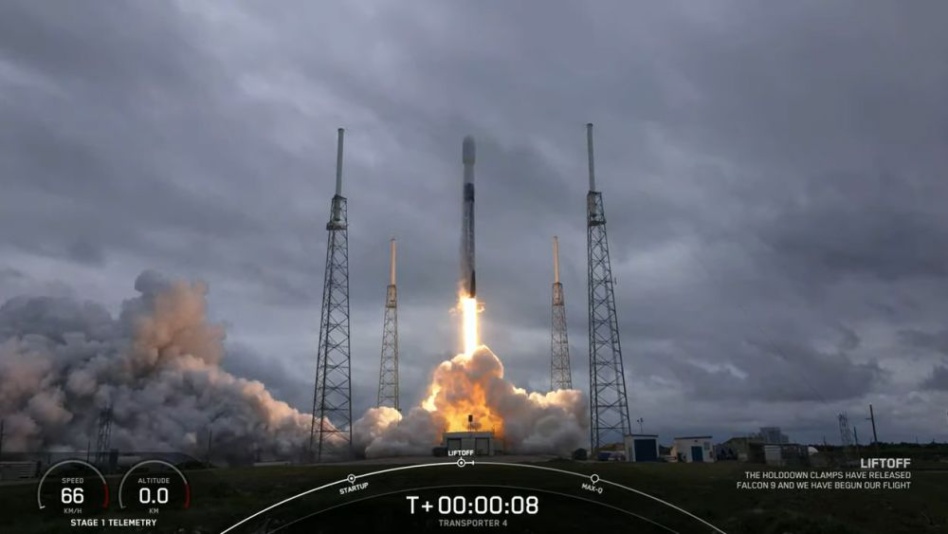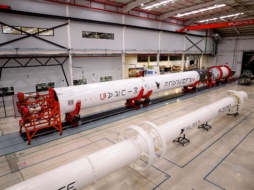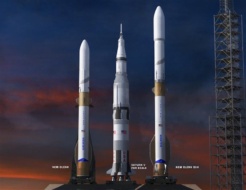On Friday, April 1, SpaceX launched Transporter-4, its fourth dedicated smallsat rideshare mission, from SLC-40 in Cape Canaveral. Following stage separation, Falcon 9’s first stage returned home and landed on the Just Read the Instructions droneship in the Atlantic.
Launch details
- Transporter-4 was launch and landing #7 for this Falcon 9 booster. Previous missions include Crew-1, Crew-2, SXM-8, CRS-23, IXPE, and a Starlink launch.
- All time, SpaceX has successfully launched 150 rockets. The Falcon 9 represents 145 of those launches, with 105 landings and 85 reflown rockets.
- The mission was SpaceX’s 12th overall flight, second Transporter mission, and fifth SLC-40 launch of 2022, per NSF.
- As Eric Berger noted, SpaceX needed over three years to launch its first dozen Falcon 9s. Now, the spaceflight company has launched and landed the last dozen Falcon 9 rockets in less than three months.
The SpaceX Transporter-4 Mission Manifest
Transporter-4 deployed 40 spacecraft into polar orbit. Below, find a five-point roundup of notable payloads, which run the gamut in terms of size, application, owner, and operator.

No. 1: Largest payload honors go to EnMAP, or Environmental Mapping and Analysis Program, a German hyperspectral satellite. Weighing 980 kg, EnMAP aims to monitor and characterize Earth’s environment on a global scale.
No. 2: D-Orbit, which plans to go public via SPAC, launched the Spacelust mission aboard Transporter-4. Spacelust saw the Italian company’s fifth free-flying orbital transfer vehicle (OTV) deployed into 500-km Sun synchronous orbit (SSO).
- D-Orbit’s Ion Satellite Carrier contains four CubeSats for Kleos Space (procured/managed SpaceFlight Inc.), three for the University of Chile, and a hosted payload for Upmosphere.
- Upmosphere’s hosted payload = a wooden box holding customer mementos. Tickets for the service start at 12,000€ (~$13,500).
- The Ion spacecraft is undergoing the Launch and Early Orbit phase (LEOP) of the mission, running health checks and validating technology in preparation for full operations.
No. 3: Pixxel, which just raised a $25M Series A, launched TD-2, the Indian startup’s first full-fledged hyperspectral spacecraft. TD2 weighs <15 kg and touts a high-res hyperspectral orbital camera, which can capture images in 150+ bands of color with a 10m/pixel resolution.
No. 4: Lynk launched Tower 1 to continue validating its two-way satellite-to-phone tech—or “cell towers in space” concept. The Virginia startup continues to ink new partnerships with mobile network operators and hopes to launch commercial services later this year, CEO Charles Miller told Payload last fall.
No. 5: Satellogic (NASDAQ:SATL) launched four updated ÑuSat Mark IVs and its new Mark V satellite model. ÑuSat satellites can see in visible and infrared light. The new launch brings Satellogic’s ÑuSat constellation size to 22 satellites. The Mark IVs include hosted payloads for Satellogic customers, while the Mark V boosts the spacecraft’s native resolution capabilities to 70 cm.
- On Monday morning, Satellogic reported that all five satellites have made contact with its ground station network with good health reports. Satellogic’s constellation now totals 22 satellites.
+ What next for SpaceX? A jam-packed month filled with more launches of spacecraft…and all-private astronauts. Transporter-4 was the first of six scheduled Falcon 9 launches in April.




